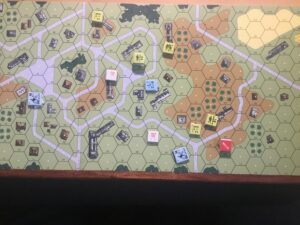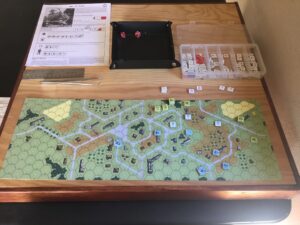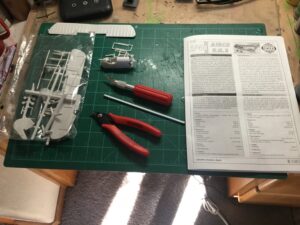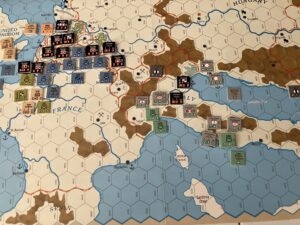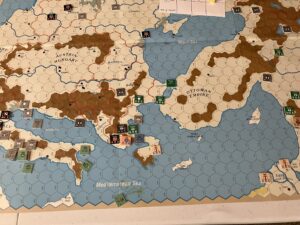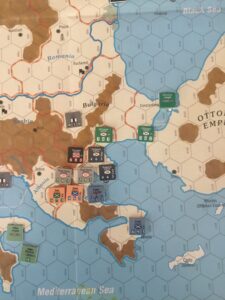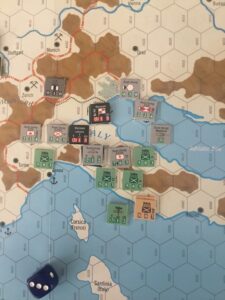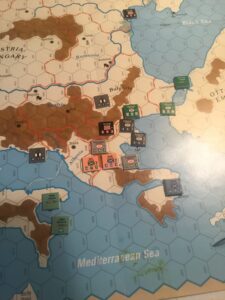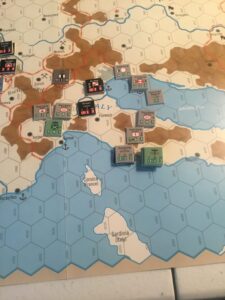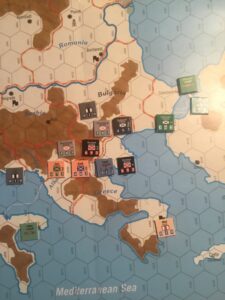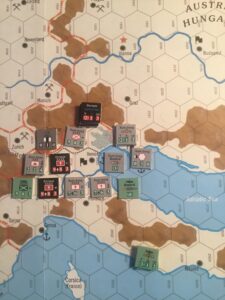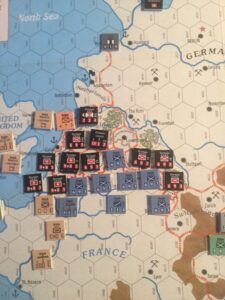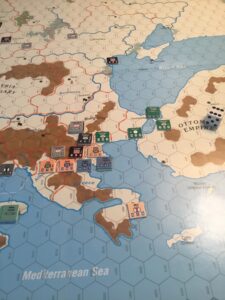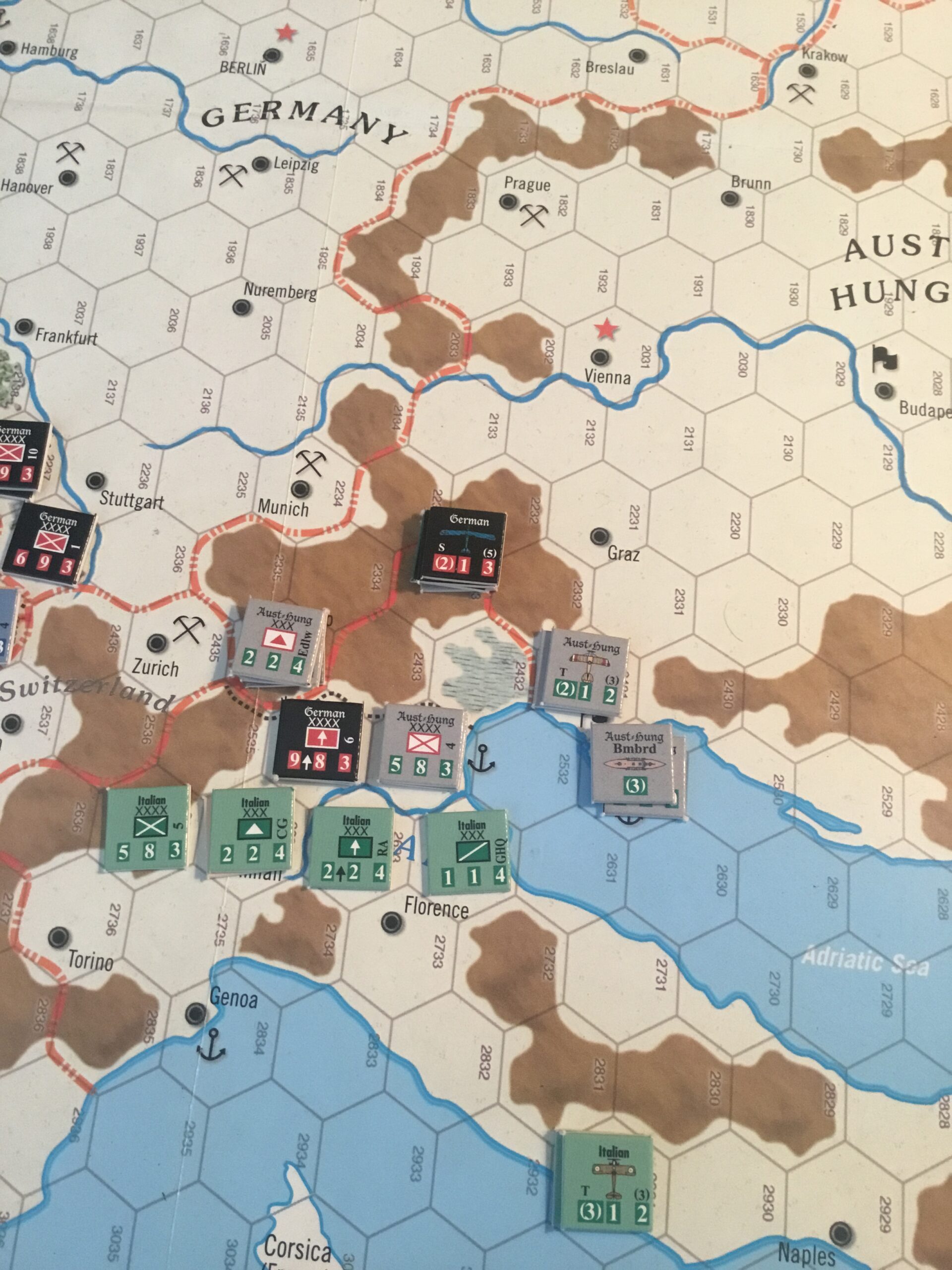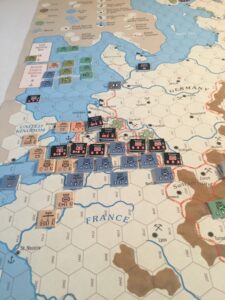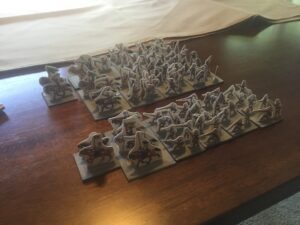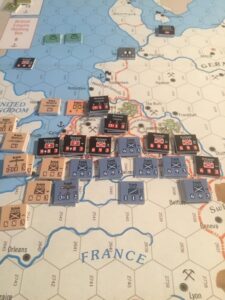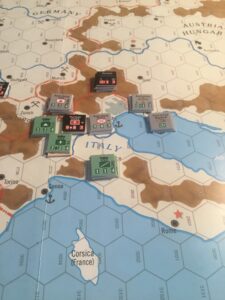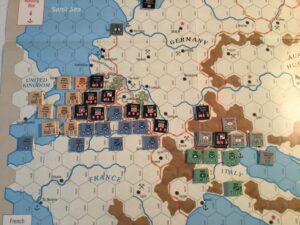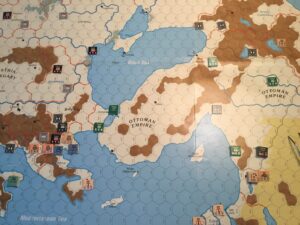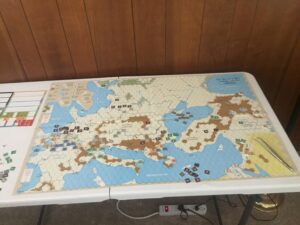Having fun with Advanced Squad Leader Starter Kit (ASLSK). Time spent studying rules was time well spent, as game flow is much smoother, with fewer breaks for references.
The game’s ebb and flow would drive me crazy if I was playing an opponent. However, it is really entertaining when playing solitaire.
An example from “88’s At Zorn” (S12), last German turn, with US having one turn after that. To win, US has to exit at leasts 3 squads and one leader from hexes due south of their current positions in the lower right hand corner of the photo.
The Germans appear to be in good shape since they can finally bring one of their 88’s to bear (BTW, good fields of fire for the 88’s are limited, so they can only cover a part of an avenue of approach). But, what happened during their Prep Fire? I rolled a “12”, weapon malfunction! With that, and a US win in the melee, game over! The US is able to exit the needed number of units from the map without any opportunity fire.
Now I’m all fired up to play another game. But, another round of “Zorn”? I did botch the rules for the first half of the game. I somehow decided stone buildings were two-levels, completely changing lines of sight (LOS) and several fire combats. It would be interesting to find out if this gaffe really made a difference.
Or, another one-mapper. I prefer the smaller scenarios, especially when ramping back up on the rules. I also enjoy playing only one or two moves a session. More than that and I start suffering from brain-strain. Speaking of brain-strain……am I ready to dip into the AFV madness of ASLSK #3? Gently, gently, gently……
